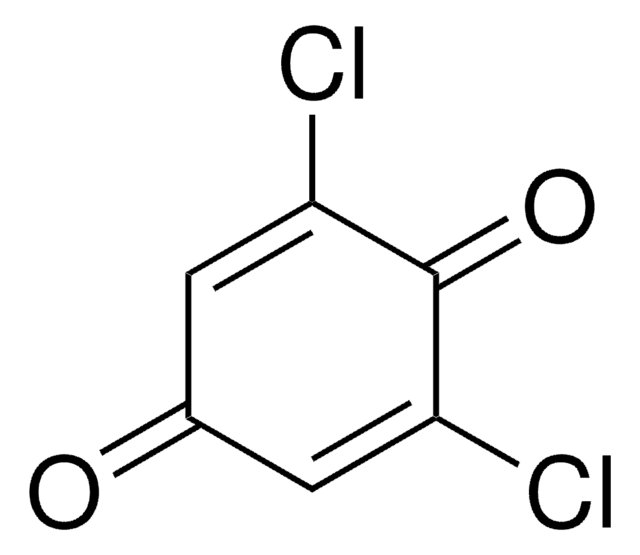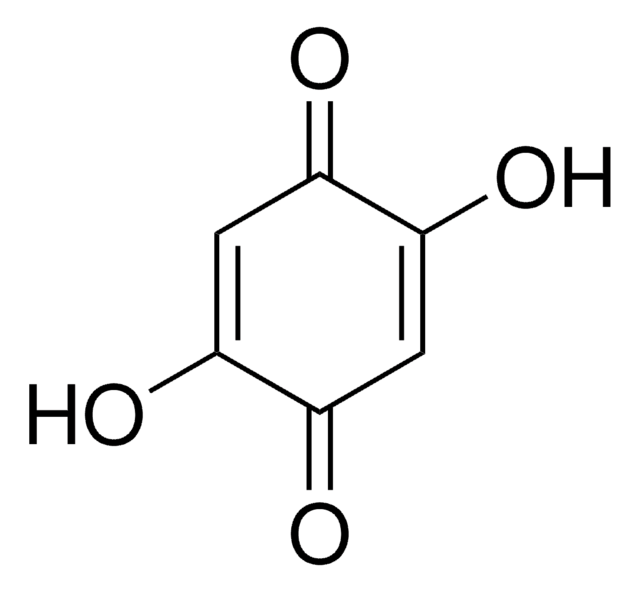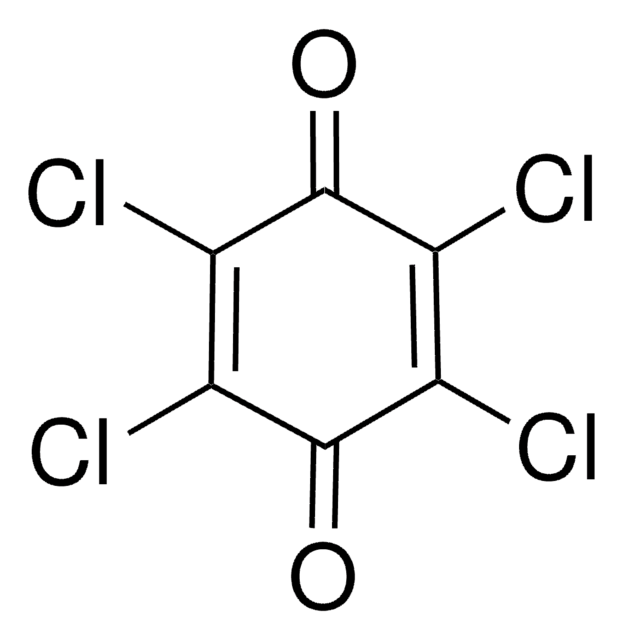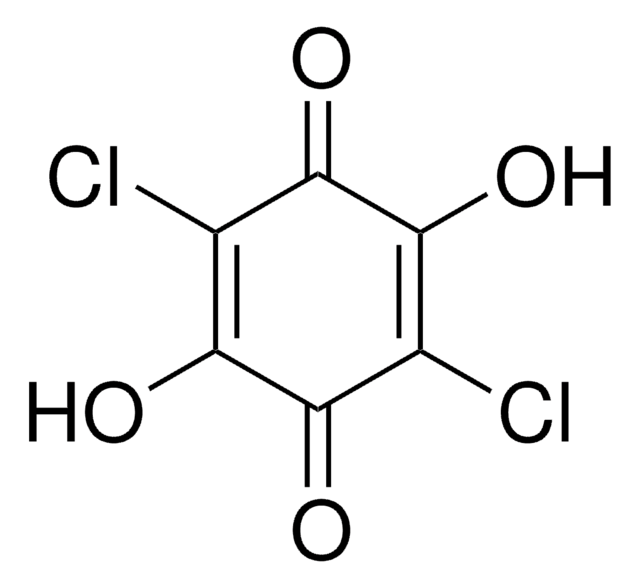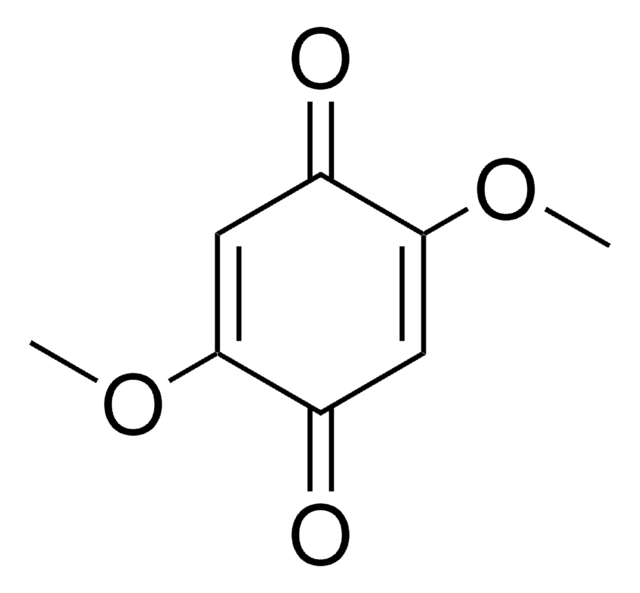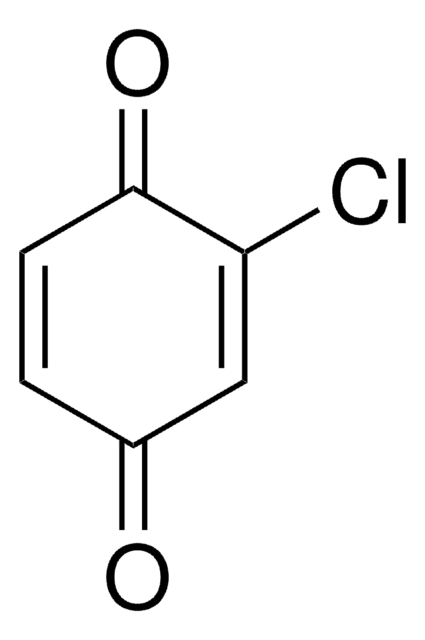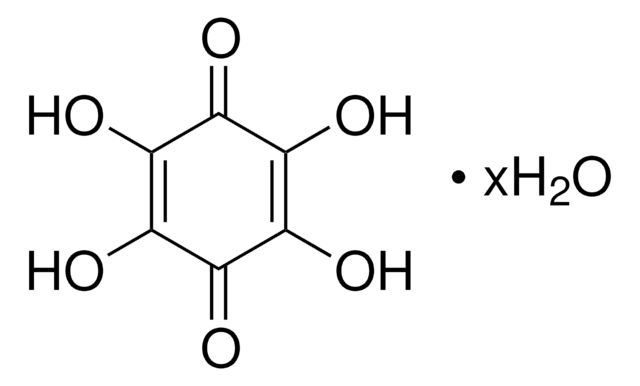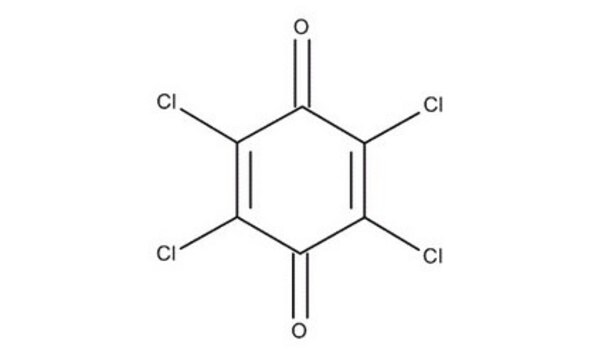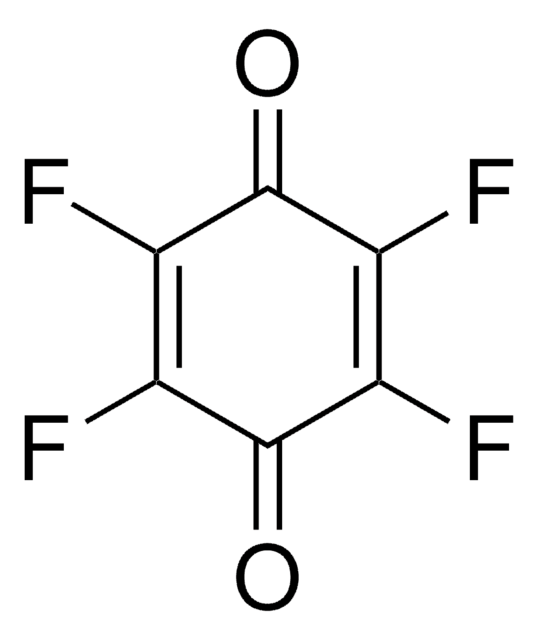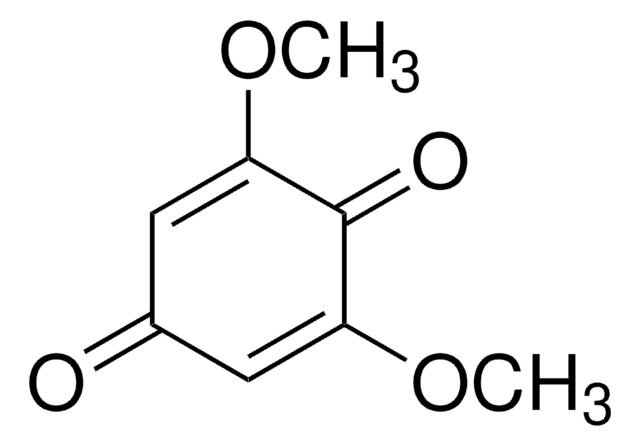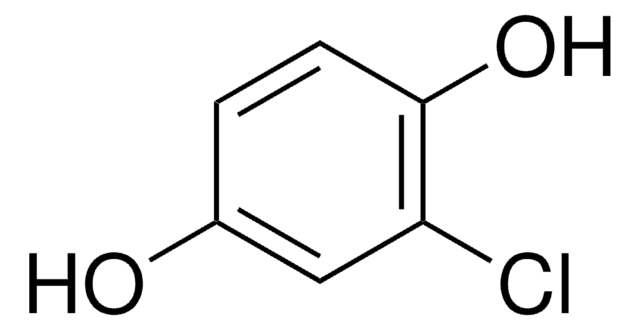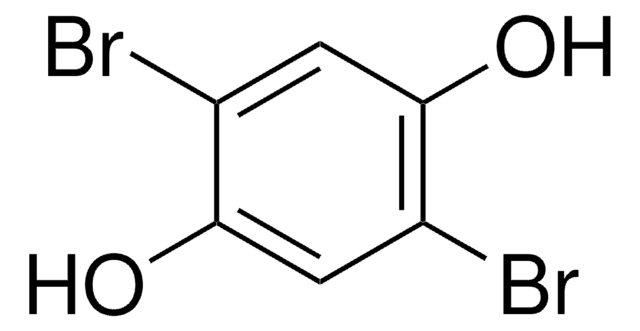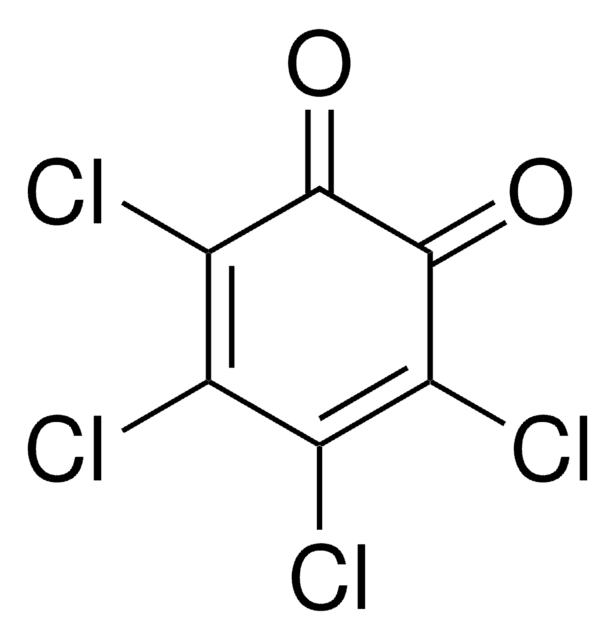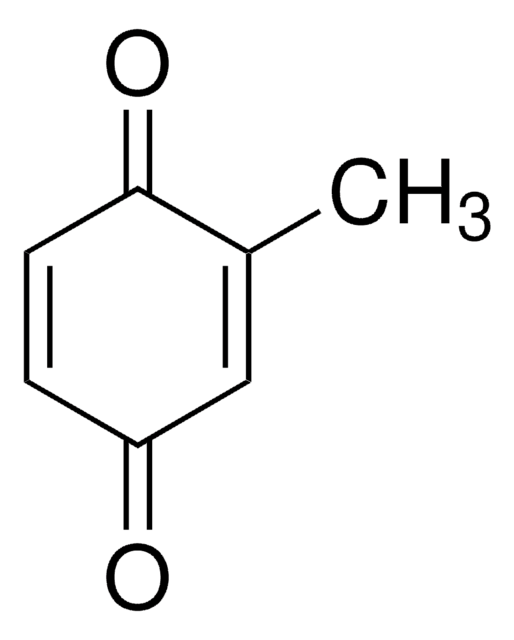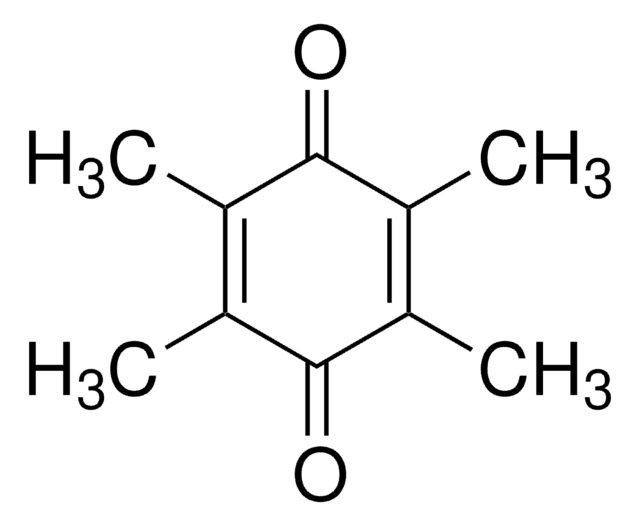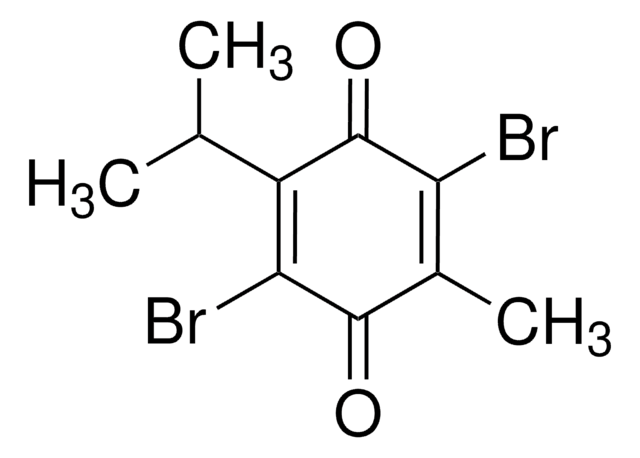431974
2,5-Dichloro-1,4-benzoquinone
98%
Synonyme(s) :
2,5-Dichloro-2,5-cyclohexadiene-1,4-dione, 2,5-Dichloro-p-benzoquinone
About This Item
Produits recommandés
Essai
98%
Pf
160-163 °C (lit.)
Groupe fonctionnel
chloro
ketone
Chaîne SMILES
ClC1=CC(=O)C(Cl)=CC1=O
InChI
1S/C6H2Cl2O2/c7-3-1-5(9)4(8)2-6(3)10/h1-2H
Clé InChI
LNXVNZRYYHFMEY-UHFFFAOYSA-N
Description générale
Application
- As a starting material in the synthesis of asterriquinone D.
- As a model to study the utility of a novel photoreactor with LED (light-emitting diode) light source and a fibre-optic CCD (charge-coupled device) spectrophotometer.
- 2,5-dichloro-3,6-bi(3-indolyl)-1,4-hydroquinone synthesis by palladium catalyzed reaction with indole.
Mention d'avertissement
Warning
Mentions de danger
Conseils de prudence
Classification des risques
Eye Irrit. 2 - Skin Irrit. 2 - STOT SE 3
Organes cibles
Respiratory system
Code de la classe de stockage
11 - Combustible Solids
Classe de danger pour l'eau (WGK)
WGK 3
Point d'éclair (°F)
Not applicable
Point d'éclair (°C)
Not applicable
Équipement de protection individuelle
dust mask type N95 (US), Eyeshields, Gloves
Faites votre choix parmi les versions les plus récentes :
Déjà en possession de ce produit ?
Retrouvez la documentation relative aux produits que vous avez récemment achetés dans la Bibliothèque de documents.
Les clients ont également consulté
Notre équipe de scientifiques dispose d'une expérience dans tous les secteurs de la recherche, notamment en sciences de la vie, science des matériaux, synthèse chimique, chromatographie, analyse et dans de nombreux autres domaines..
Contacter notre Service technique